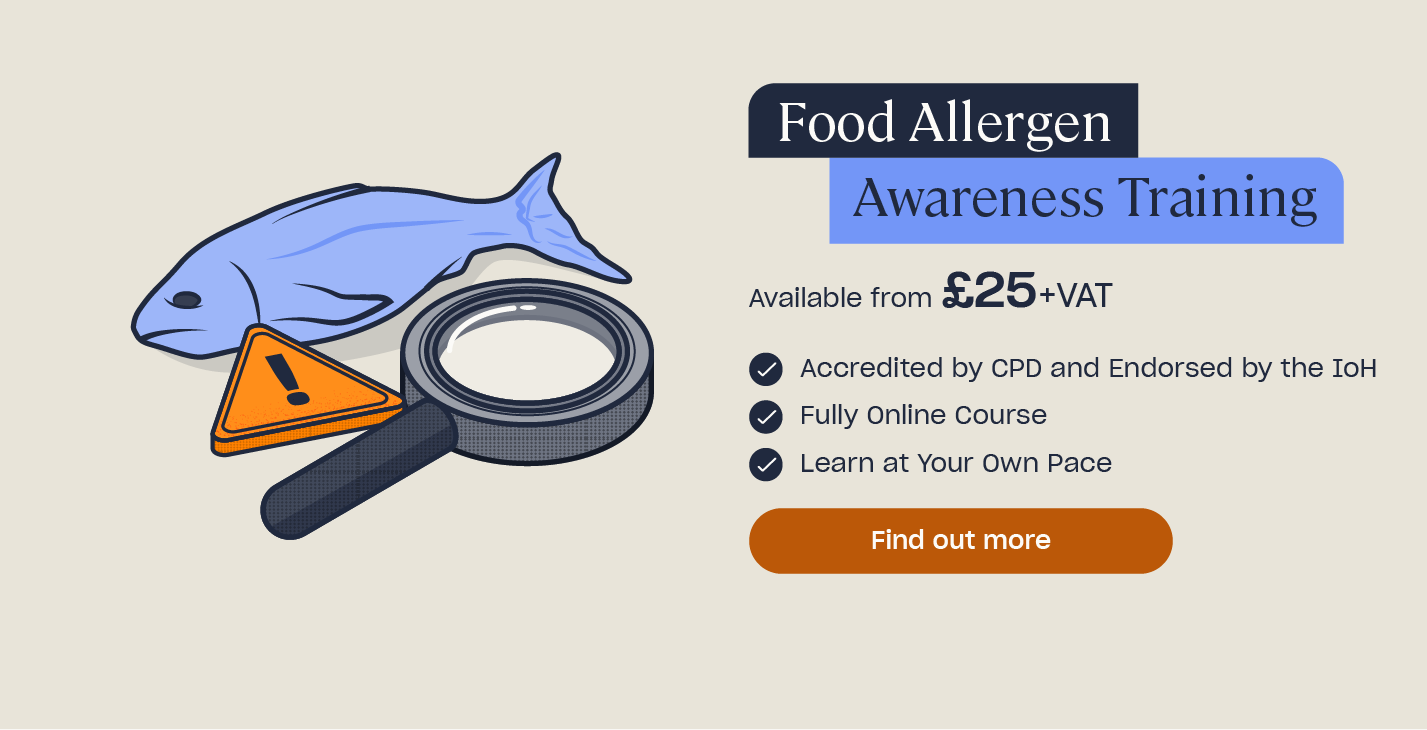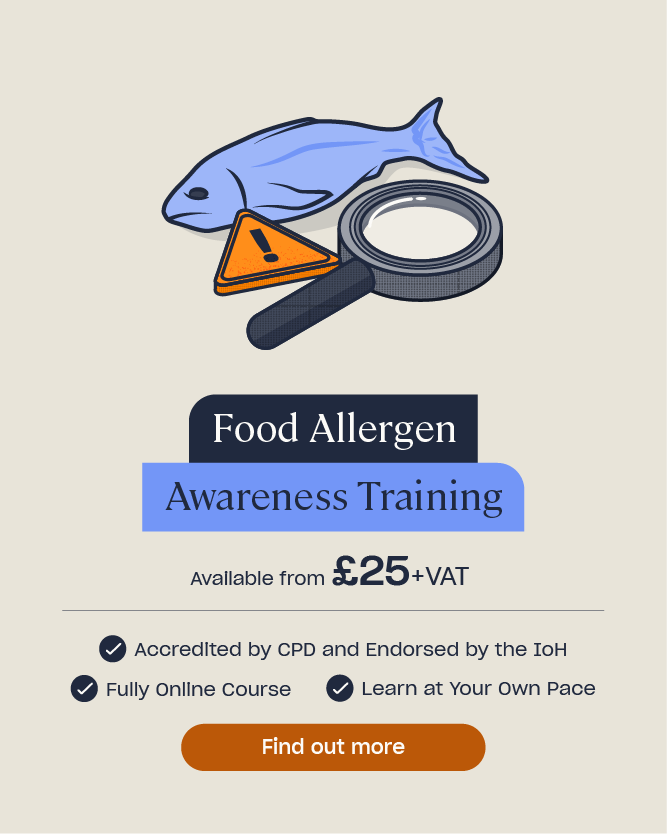What is a Food Intolerance?
Unlike allergies, food intolerances are not life threatening. However, those who suffer from food intolerances can be significantly impacted during their daily life. The symptoms of food intolerances can vary greatly and as such, it is difficult to know just how many people in the UK are affected, but it is widely believed that this common issue is on the rise.
In this article, we will outline what food intolerances are, the common causes and symptoms that they can bring, and examine the different types of intolerances that you may experience. We will also explain how you can successfully manage an intolerance.
What Does Food Intolerance Mean?
A food intolerance is having difficulty digesting certain foods, resulting in an adverse physical reaction to them if they are eaten. As such, a food intolerance affects the digestive system, and the symptoms that occur – typically bloating or stomach pain – usually present themselves within a few hours of eating the food.
It’s essential to remember that while both conditions should be treated seriously, a food intolerance is not the same as a food allergy, and there are a number of ways to tell the difference.
With a food intolerance:
- The digestive system is affected.
- Symptoms typically present themselves over a short period of time – often a few hours after eating the food.
- Symptoms often only arise if large amounts of the offending food is consumed.
- While unpleasant, it is not life threatening.

Conversely, with a food allergy:
- The immune system is affected.
- Symptoms (such as swelling in the throat or mouth, a rash, or wheezing) tend to appear rapidly after eating the food.
- Symptoms arise even if only trace amounts of the offending food is consumed.
- It can be life threatening.
Want to Learn More?
For more information on food allergens and their effects, check out our Food Allergens Awareness and Anaphylaxis Awareness training courses.
Causes and Symptoms of Food Intolerance
People who suffer from food intolerances often don’t create enough of a particular enzyme that the digestive system requires in order to successfully break down certain foods. This is what causes the unpleasant symptoms that occur from consuming the offending food.
It’s currently unknown why certain people develop food intolerances. However, existing gastrointestinal conditions (such as coeliac disease or Crohn’s disease) can make it more likely that someone would develop food intolerances. These food intolerances can be hereditary and exist throughout early childhood, but they can also develop later in life.
Symptoms of a food intolerance include, but are not limited to:
- Bloating.
- Rashes.
- Headaches.
- Nausea.
- Fatigue.
- Flushing of the skin.
- Stomach pain.

The symptoms can vary in severity and how long they last – some may clear up after a couple of hours, but others can last a day or two. This can make it challenging to identify exactly which food causes the symptoms.
Food intolerance symptoms are similar to that of other conditions, such as:
- Irritable Bowel Syndrome (IBS).
- Stress and Anxiety Disorder.
- Inflammatory Bowel Disease (IBD).
As such, it’s common for people to confuse the true reason behind their symptoms and make it difficult to diagnose that they have a food intolerance.
What are the Different Types of Food Intolerance?
People can be intolerant to any kind of food. However, there are certain foods that more commonly cause food intolerances than others, such as lactose, gluten and certain additives or chemicals.
Lactose intolerance
This intolerance is caused by the body being unable to digest lactose, which is a natural sugar found in dairy products such as milk, yoghurt and cheese.
The body breaks down lactose using a substance called lactase. However, people with a lactose intolerance do not produce enough lactase, resulting in the lactose remaining in the digestive system, where it is fermented by bacteria.
The symptoms that occur from a lactose intolerance can be managed by limiting food and drink products that contain lactose from the diet.
Gluten intolerance
Gluten is a protein that is found in three types of cereal: wheat, barley and rye. It’s also found in any food or drink made using any of these cereals such as: pasta, bread, cakes, sauces, or beer.
A person with gluten intolerance experiences symptoms such as bloating, nausea or stomach pain after eating foods that contain gluten. These symptoms typically improve when the person eliminates gluten from their diet.
A gluten intolerance is also associated with other symptoms that don’t involve the digestive system such as:
- Headaches.
- Fatigue.
- Depression or anxiety.
- Joint pain.
It’s important to remember that gluten intolerance is not the same as coeliac disease, which is a serious autoimmune disease that is caused by an adverse reaction to gluten.
For more information, check out our article: How to Identify Which Foods Contain Gluten.

Food Additives and Food Chemicals
A food intolerance is also often caused by a certain food additive or chemical, such as:
- Monosodium Glutamate (MSG) – This is a common flavour enhancer derived from L-glutamic acid found in fast food, crisps and frozen meals. It is also naturally found in ripening fruits and cured meats.
- Caffeine – This stimulant is often found in coffee, tea and energy drinks. However, it can also be found in chocolate, ice cream, and other coffee-flavoured desserts.
- Alcohol – This organic substance is found in all alcoholic beverages of varying strengths, such as beer, wine, cider and spirits.
- Amines – These are produced by bacteria during food storage and fermentation, and can be found in a number of foods including cured meats, citric fruits, avocados and smoked fish. Histamine is one example of a common amine that people often have an intolerance to.
- Sulphites – These are food preservatives that can be found in foods such as dried fruit, pickled foods, condiments and baked goods, among others. Having an intolerance to sulphites is common in asthma sufferers, although anyone can be sensitive to the chemicals.
- Fructose – Fructose is a sugar found in fruits and vegetables, along with certain sweeteners (such as honey) and drinks. A fructose intolerance is caused by a person’s inability to efficiently absorb the fructose into the bloodstream. Instead it travels to the large intestine, where it is fermented by bacteria, resulting in unpleasant symptoms.
How to Manage a Food Intolerance
If you think you are suffering from a food intolerance, the best way of confirming your diagnosis is by monitoring the food you are eating and noting the corresponding symptoms that occur. This can identify the specific food that is causing the intolerance. For example, you can do this by keeping a food diary – noting down what you are eating and whether there are any corresponding symptoms that occur.
Once you have identified which food may be causing the symptoms, it’s recommended that you limit or remove the food from your diet entirely for 2-6 weeks. During this time, you can again monitor your symptoms and see if they continue. If your symptoms cease altogether, you may have found the culprit.

You can also reintroduce the offending food once you have identified it, to see whether you can tolerate a limited amount in your diet, or you can simply avoid it altogether.
If you think your child may have an intolerance, however, you should consult your GP before you eliminate foods from their diet as this can affect their growth and development.
If you have confirmed a food intolerance, there are steps you can take to manage it. You can successfully avoid consuming the problem food by checking food menus and packaging labels in order to identify the ingredients being used. For more information on clean label packaging, check out our article, here.
As food intolerances are on the rise, it is also now easier than ever to find substitute foods that mean you can avoid foods that cause you to experience unpleasant symptoms. For example, if you have a lactose intolerance, you can substitute cow’s milk for a dairy-free alternative such as soy milk, oat milk or almond milk. Equally, if you have a gluten intolerance, you can readily find substitutes such as gluten-free pasta and bread. These alternatives can help you to avoid problem foods and allow you to live without any more unpleasant symptoms.
We hope you’ve found this article on food intolerances informative and helpful. If you have any further questions, or wish to find out more information on the topics covered in this article, please don’t hesitate to get in touch with us at High Speed Training!
Further Resources
- Food Allergen Awareness Training
- What are the ‘Big 8’ Food Allergies?
- A Guide to Food Labelling Regulations
- What is a Food Hypersensitivity?







